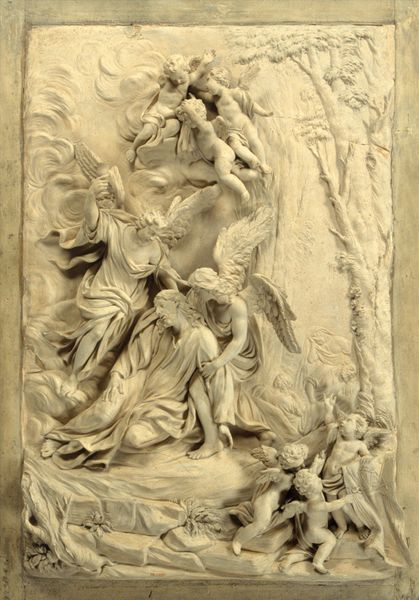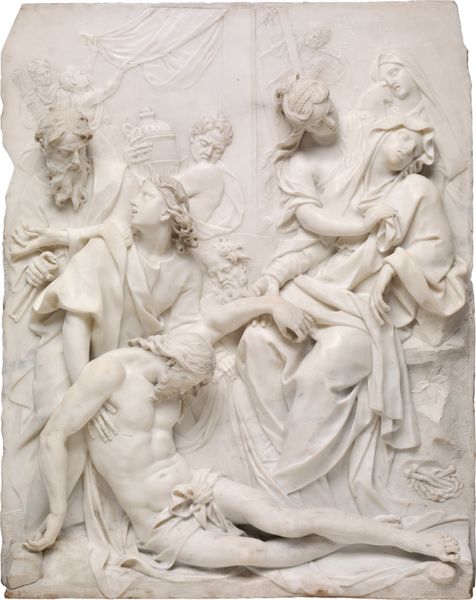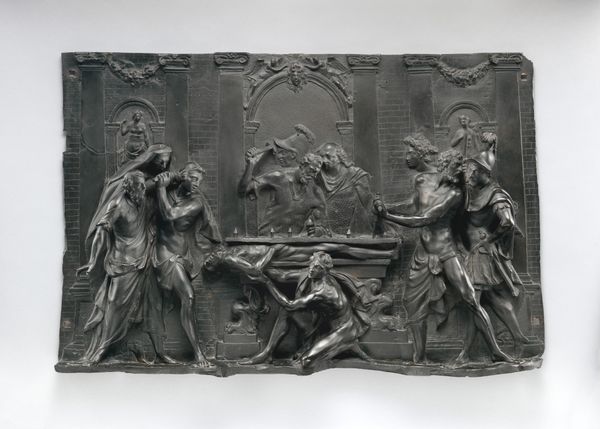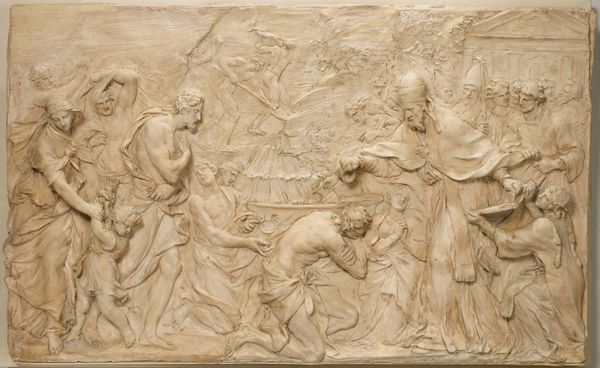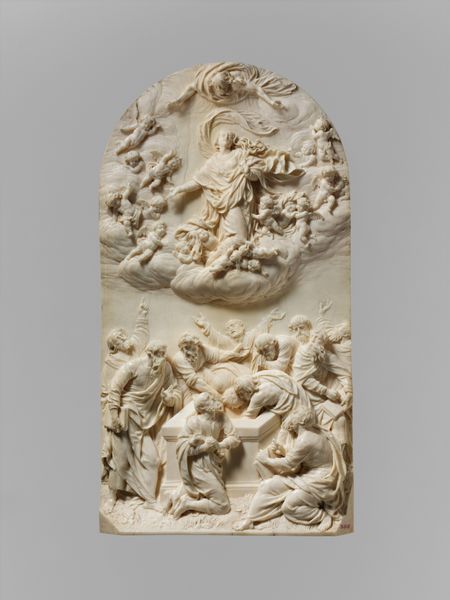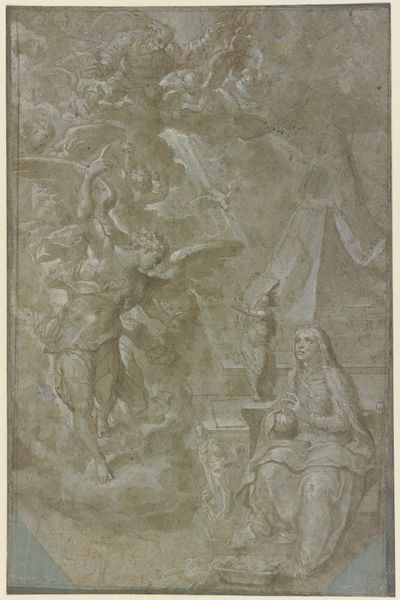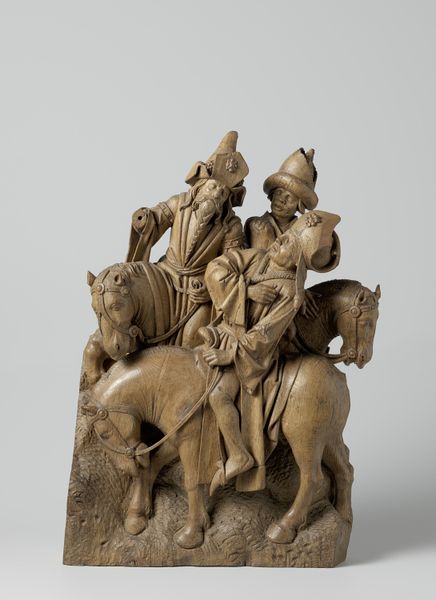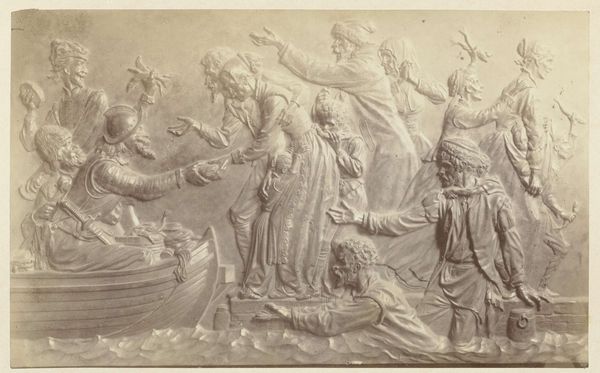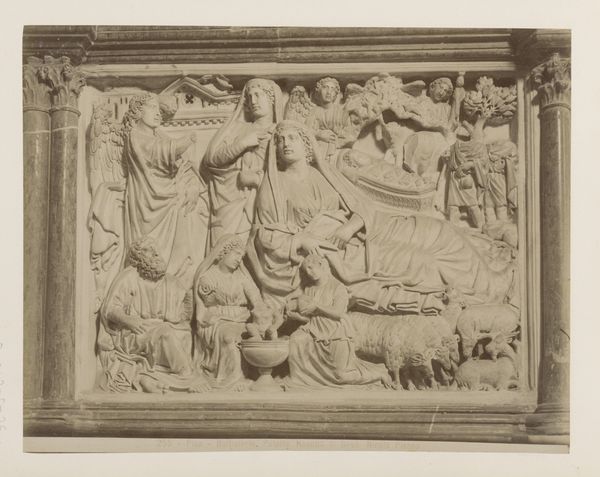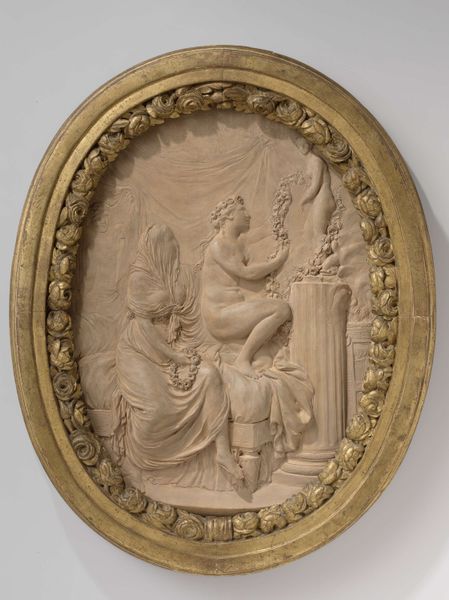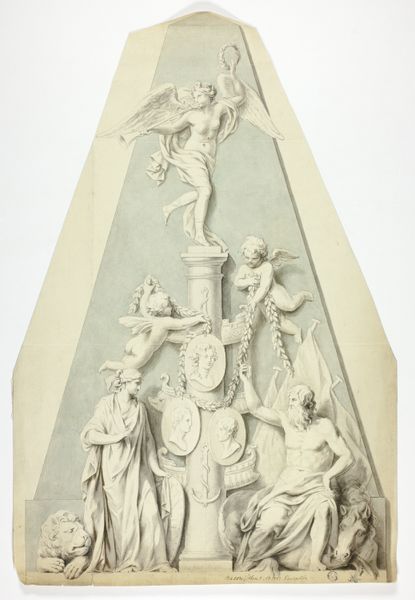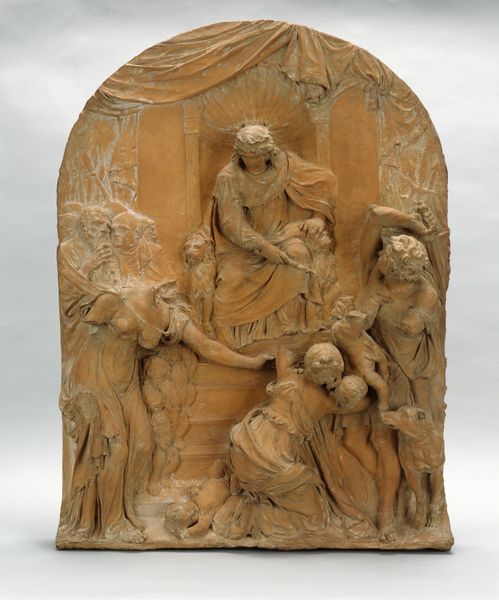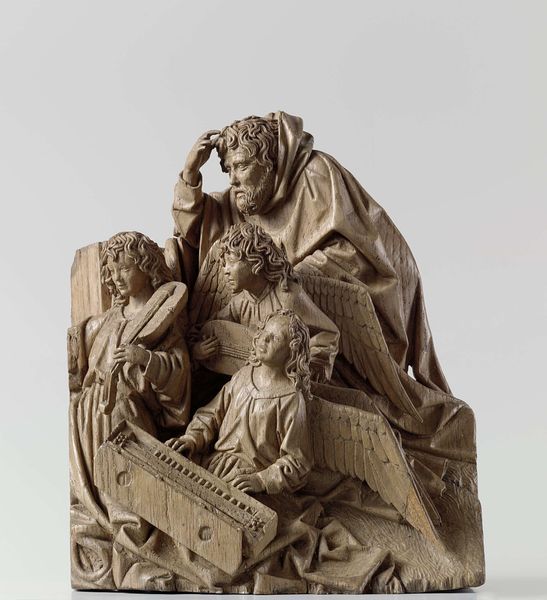
Dimensions: 7 ft. 8 in. x 5 ft. 8-1/2 in. (233.5 x 174.5 cm.)
Copyright: Public Domain
Editor: This sculpture, “God the Father,” made of marble sometime between 1765 and 1785 by Ignaz Günther, really strikes me. The cascading clouds and multitude of cherubic faces create such a dramatic, almost overwhelming sense of divinity. What do you see in this piece, especially considering its historical context? Curator: Considering Günther’s historical placement, this sculpture can be examined through the lens of the Catholic Church’s shifting relationship with art during the late Baroque and early Rococo periods. How does the dramatic, almost theatrical presentation of divine power speak to the social functions of religious art at this time? Editor: I guess it’s a shift from simple representation toward a more persuasive display, a way of reaffirming the Church's authority? Curator: Exactly. These ornate depictions of God and heavenly beings encouraged piety among the faithful while demonstrating the wealth and artistic patronage the church still held, even as secular powers rose. Note how God’s gesture implies command, dominating the earthly sphere held by the cherubs. Does that strike you as a particularly accessible depiction, or is there something performative about it? Editor: Performative, definitely. It feels less like a loving father and more like a distant ruler asserting dominance. So it’s about power as much as faith, presented through a controlled aesthetic experience? Curator: Precisely. Art of this era served specific socio-political roles in reinforcing structures of power, carefully balancing the awe of the divine with tangible displays of earthly influence. Editor: It’s interesting to see how the sculpture’s grandeur connects to the power dynamics of its time. Thanks! Curator: Indeed. Thinking about it this way reveals so much about the social functions of art!
Comments
No comments
Be the first to comment and join the conversation on the ultimate creative platform.
